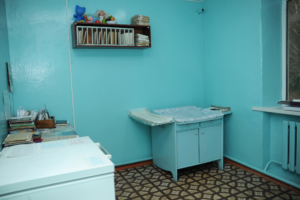Healthcare Improvements in Kyrgyzstan
 Healthcare is an important concern for the government of Kyrgyzstan and has been for many years. Kyrgyzstan has introduced multiple reforms of its healthcare system since 1996. As of 2019, about eight percent of the country’s GDP has been spent on the healthcare system. Kyrgyzstan’s efforts to improve their healthcare manifest in several ways. For example, life expectancy rose from 66.5 years in 1996 to 71.0 years in 2016. In order to fully appreciate the reforms, aid and healthcare improvements in Kyrgyzstan, it is important to understand the state of the country’s healthcare system prior to reforms and improvements.
Healthcare is an important concern for the government of Kyrgyzstan and has been for many years. Kyrgyzstan has introduced multiple reforms of its healthcare system since 1996. As of 2019, about eight percent of the country’s GDP has been spent on the healthcare system. Kyrgyzstan’s efforts to improve their healthcare manifest in several ways. For example, life expectancy rose from 66.5 years in 1996 to 71.0 years in 2016. In order to fully appreciate the reforms, aid and healthcare improvements in Kyrgyzstan, it is important to understand the state of the country’s healthcare system prior to reforms and improvements.
Healthcare in Kyrgyzstan
Kyrgyzstan was a Soviet Republic during the Cold War. The country had free and universal healthcare financed by the Soviet Union’s Ministry of Health. Following the dissolution of the Soviet Union in 1991, healthcare within the country of Kyrgyzstan began to decline. The healthcare system’s decline in Kyrgyzstan’s during this period was partly due to the lack of medical necessities. Because of their crumbling healthcare system, Kyrgyzstan needed reforms. Long after their independence from the Soviet Union, they have made these reforms.
The government has recently launched two initiatives to promote healthcare improvements. The first is the Primary Health Care Quality Improvement Program. The purpose of this program is threefold. First, to improve the quality of healthcare services. Secondly, to increase access to and quality of healthcare services. Finally, to establish better governance over the healthcare system to ensure the program is successful. The program is still in its early stages. It was approved in 2019 and will last until 2024.
Kyrgyzstan has ensured better healthcare delivery to its people by partnering with USAID to eradicate tuberculosis (TB) from the country; each year, the country faces roughly 8,000 cases of TB. Of those roughly 8,000 cases, about 1,300 are drug-resistant TB which is much more difficult to treat.
In response, Kyrgyzstan makes use of the USAID Cure Tuberculosis project. The project provides $18.5 million to the country of Kyrgyzstan in order for medical professionals to provide the necessary care for people who have the drug-resistant form of tuberculosis.
With these two programs active, the government hopes to bring about more healthcare improvements in Kyrgyzstan for people in general and for those specifically suffering from drug-resistant tuberculosis.
– Jacob Lee
Photo: Wikimedia
